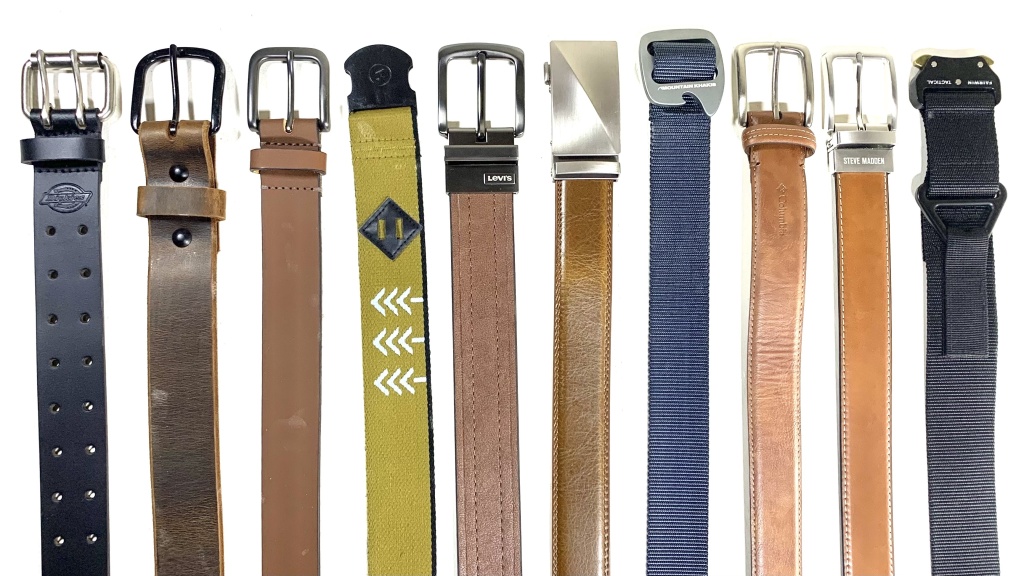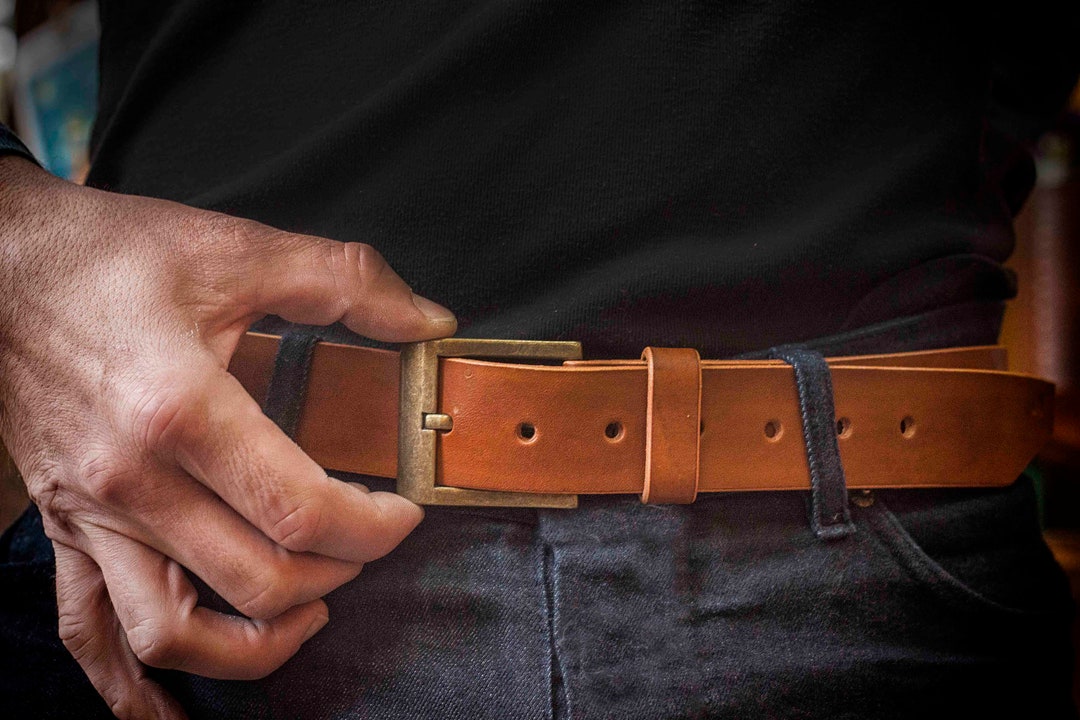
Introduction:
A versatile and essential accessory in any wardrobe, a well-chosen belt not only serves a practical function but also elevates the overall style and aesthetic of an outfit. When it comes to selecting the best belt, considerations such as material, design, and buckle type are paramount to achieving a perfect complement to any ensemble. In this comprehensive guide, we delve into the intricacies of finding the best belt, exploring the various elements that contribute to its functionality, durability, and visual appeal.
Part 1: Belt Materials and Construction
Level 1: Leather – A Timeless Classic
Leather belts stand the test of time, offering unmatched durability, suppleness, and a sophisticated appearance. Full-grain, top-grain, and genuine leather are popular options, each with distinct qualities that define their appearance and longevity.
Level 2: Alternative Materials and Blends
In addition to traditional leather, belts crafted from alternative materials such as canvas, nylon, and microfiber offer unique textures and moisture-resistant properties, ideal for active or casual wear. Blended materials may also provide a balance of strength and flexibility, catering to various styling preferences.
Part 2: Design Elements and Style Considerations
Level 1: Width and Thickness Variations
The width and thickness of a belt play a crucial role in achieving a proportional and balanced look. Different outfits and body types call for varying belt widths, from slim and refined designs to wider, more substantial options, offering versatility to complement diverse wardrobes.
Level 2: Stitching, Embossing, and Patterns
Distinctive stitching, embossed textures, and intricate patterns add visual interest and character to a belt, providing an opportunity for personal expression and style versatility. These design elements contribute to the overall aesthetic while reflecting individual tastes.
Part 3: Buckle Types and Functional Features
Level 1: Pin, Prong, and Reversible Buckles
Belt buckles range from classic pin and prong styles to innovative reversible designs, offering functional and aesthetic diversity. Considerations of ease of use, adjustability, and overall appearance factor into selecting the most suitable buckle type for individual needs.
Level 2: Ratcheting, Slide, and Magnetic Closures
Modern advancements in belt closures have introduced ratcheting, slide, and magnetic mechanisms, providing enhanced convenience and secure fastening. These closures offer a contemporary and streamlined look, while also simplifying belt adjustments for optimal comfort.
Part 4: Tailoring for Perfect Fit and Versatility
Level 1: Sizing and Adjustability
The proper sizing and adjustability of a belt are essential for achieving a comfortable and secure fit. Belts with multiple sizing options, such as reversible or adjustable belts, provide versatility and adaptability for different outfits and waist sizes.
Level 2: Customization and Tailoring Services
Some brands offer customization and tailoring services, allowing individuals to create bespoke belts uniquely tailored to their measurements and style preferences. This personalized approach ensures a perfect fit and an unparalleled level of individuality.
Part 5: Durability, Maintenance, and Longevity
Level 1: Quality Craftsmanship and Construction
The durability and longevity of a belt depend on the quality of craftsmanship, including reinforced stitching, robust hardware, and meticulous attention to detail in the manufacturing process. These factors contribute to the overall resilience and lifespan of the belt.
Level 2: Care and Maintenance Practices
Proper care and maintenance, such as regular cleaning, conditioning, and storage, are crucial for preserving the integrity and appearance of the belt. Following manufacturer-recommended maintenance practices ensures that the belt maintains its quality and aesthetics over time.
Part 6: Sustainable and Ethical Considerations
Level 1: Eco-Friendly Material Choices
As environmental awareness continues to influence consumer choices, sustainable belts made from eco-friendly materials, such as recycled leather or organic fabrics, have gained popularity. These options support a more responsible approach to fashion, reflecting a commitment to minimizing environmental impact.
Level 2: Ethical Sourcing and Production
Consumers may seek belts from brands that prioritize ethical sourcing and production processes, ensuring fair labor practices and transparent supply chains. By choosing belts from companies committed to ethical principles, individuals can align their purchases with values of social and environmental responsibility.
Part 7: Versatile Belt Styling and Coordination
Level 1: Formal and Casual Versatility
The best belt offers versatility to seamlessly transition between formal and casual ensembles, serving as a dynamic accessory suitable for a range of occasions. Its ability to complement both dressed-up and relaxed looks enhances its value and practicality in various settings.
Level 2: Coordinating with Outfits and Accessories
A well-chosen belt coordinates harmoniously with other accessories and clothing items, such as shoes, watches, and bags. The ability to integrate with existing wardrobe choices, while adding cohesion and polish to the overall appearance, further underscores the importance of selecting the best belt.
Part 8: Symbolic and Personal Significance of Belts
Level 1: Cultural and Historical Significance
Belts carry symbolic meaning across different cultures and historical contexts, representing concepts such as strength, unity, and authority. Understanding the cultural significance of belts adds depth to their role as both a functional and symbolic accessory.
Level 2: Personal Expressiveness and Identity
For many individuals, belts hold personal significance, representing a sense of style, character, or individuality. The selection of a belt often becomes a form of self-expression, allowing individuals to convey their unique tastes and personality through their choice of accessory.

Conclusion
The best belt extends beyond its surface-level functionality, embodying a reflection of personal values, style preferences, and sustainability considerations. By examining its material composition, design elements, ethical sourcing, versatility, and symbolic significance, individuals gain a holistic understanding of the impact and importance of this often overlooked yet integral accessory. Ultimately, the best belt serves as a tangible expression of both individual style and conscientious consumption, creating a meaningful connection between the wearer, their wardrobe, and the world around them.
Through a thorough exploration of the various facets of belt selection, individuals can navigate the vast array of options with confidence, ensuring that their choice encapsulates not only practicality and style but also resonates with their personal values. As an essential component of everyday attire, the best belt becomes more than just an accessory – it becomes a statement of intent, a fusion of individuality and purpose. By understanding and embracing the multifaceted nature of belts, individuals can curate a collection that transcends mere fashion, becoming an expression of their conscious lifestyle and sartorial identity.
In conclusion, the selection of the best belt involves a careful and thoughtful assessment of materials, design elements, functional features, and long-term quality. When chosen wisely, a belt becomes a defining accessory that not only accentuates personal style but also delivers the practicality and durability necessary for everyday wear. By understanding the nuances of belts and their diverse attributes, individuals can make informed choices, ultimately discovering the perfect belt that harmonizes with their wardrobe, lifestyle, and individual expression.


